Topics
Category
Era
St. Peter and St. Paul Russian Orthodox Church, Bramble
Active only from 1918 until 1932, St. Peter and St. Paul Russian Orthodox Church in Bramble served a small number of farming families who had ventured north from Chisholm to claim homesteads. The church received a new lease on life in 1968 when it was “discovered” by Paul Berg, an Episcopal priest from Grand Rapids. Berg’s restoration efforts led to a renewed interest in the church, which has continued to inspire the religious and artistic imagination of the region.
In the late nineteenth century, eastern European immigrants flooded into the United States to work in mines and factories. Immigrants from the northeastern corner of the Austro-Hungarian Empire, often referred to as Ruthenians or Rusyns, filled the steel mills and coal mines of Pennsylvania as well as the iron mines of Minnesota. In the early 1900s, some of these miners claimed homesteads north of Chisholm, in southeastern Koochiching County—a community they called Bramble.
Farmers in the Bramble area began organizing their own congregation in 1910, after William (Wasyl) Lucachick (Lukaczyk) donated two acres of land for a church building. Because of the need to gather building materials, construction did not begin until 1915 and was not completed until 1918. A few years later, the neighboring Sorokie family donated land nearby for a cemetery.
The church’s architecture is common to many buildings built by Rusyn immigrants in the United States, and mirrors the construction of the St. Nicholas Orthodox Church in Chisholm. The narthex (nave entrance) features a belltower with a double onion dome made of bent sheet metal, topped by a Slavic three-barred cross. According to Russian tradition, the nave is free of pews, with only benches along the walls. Alex Terebenetz added the iconostasis in 1926. The sanctuary/altar area is also crowned by a Slavic cross on the exterior.
There is no record of consecration for the church, meaning that it never had a priest assigned to it. It was served instead by a priest from Chisholm who made the trek north once a month when weather permitted. Due to the severity of the winters and the fact that many of the homesteaders worked in the mines near Chisholm, the church was seldom used during the cold months. By 1932, due to the Great Depression and the difficulty of farming in northern Minnesota, most of the families had given up and moved back to Chisholm. In that year, the church closed, and its semi-regular services ceased.
An Episcopal priest from Grand Rapids named Paul Berg visited St. Peter and St. Paul Church in 1967. When he arrived, the caretakers of the church (the Diachok family) were discussing plans with the Koochiching County Historical Society to turn it into a museum. Berg recoiled at the idea, which reminded him of the conversion of Orthodox churches into museums in the USSR. He eventually suggested restoring the church and reviving occasional services instead, and his proposal won out.
The restoration effort garnered interest throughout the state and beyond. Berg points out that it was an “ecumenical” effort, drawing on the art department of Augsburg College and the icon-writing expertise of iconographer Sister Mary Charles McGough from St. Scholastica Priory. In this spirit, Sister Mary Charles was commissioned to write a Marian icon called “Our Lady of Unity” for the church. An original troparion (hymn) was also composed that tied “the Bramble church” to the bramble bushes mentioned in the Bible.
When the church celebrated its fiftieth anniversary in 1968, Archbishop John of the Russian Metropolia (soon to be the Orthodox Church of America) brought the famous Tikhvin icon, which he had taken out of the Soviet Union, to St. Peter and St. Paul Church. For several years into the mid-1970s, “Tikhvin Festivals” were held annually at the church, drawing interest from miles away and raising money for upkeep.
In the more than fifty years since Fr. Berg’s efforts, the church has seen two major restoration efforts—in 2010/2011 and in 2018 for its centennial celebration. The same Lucachick family that donated the land for the church in 1910 nominated it for the National Registry of Historic Places in 1982 and became its primary caretaker. In the early 2000s, it began hosting the annual retreat of St. Basil of Ostrog Serbian Orthodox Church, the only active Orthodox church remaining in Chisholm.
.Bibliography
Berg, Paul L. “The Incredible Story of the Forgotten Church.” Orthodox Church 4, no. 6 (June/July 1968): 6–7, 10–11.
Dyrud, Keith P. “East Slavs: Rusins, Ukrainians, Russians, and Belorussians.” In They Chose Minnesota: A Survey of the State’s Ethnic Groups, edited by June Drenning Holmquist, 405–422. Minnesota Historical Society Press, 1981.
Goman, John D. Galician-Rusins on the Iron Range. Rohart Services Desktop Publishing, 1990.
Knutson, David. “Little-used Orthodox Church a Jewel in the Wilderness.” St. Paul Pioneer Press, May 15, 1994.
Lathrop, Alan K. Churches of Minnesota: An Illustrated Guide. University of Minnesota Press, 2003.
“‘Lost Parish’ Receives New Convert.” Orthodox Church 41, nos. 8/9/10 (August/September/October 2005): 14.
Lucachick, James. “Sts. Peter and Paul Russian Orthodox Church.” National Register of Historic Places nomination form, December 29, 1982. State Historic Preservation Office, St. Paul.
Tyssen, Linda. “Historic Bramble Russian Orthodox Church to Celebrate Annual Service.”Mesabi Tribune, September 11, 2021.
Related Resources
Secondary
Duly, William. The Rusins of Minnesota. Rusin Association, 1993.
Herbel, Oliver. Turning to Tradition: Converts and the Making of an American Orthodox Church. Oxford University Press, 2014.
Sarkisian, Aram Gregory. “The Cross Between Hammer and Sickle: Russian Orthodox Christians in the United States, 1908–1928.” PhD diss., Northwestern University, 2019.
——— . “‘We Go Fearlessly into the Maw of Death’: The Influenza Epidemic of 1918 in American Orthodox Rus.’” Journal of Orthodox Christian Studies 4, no. 2 (2021): 211–37.
Web
2 Wheels 1 Compass. “An Abandoned Eastern Orthodox Church in Northern MN: 2W1C S04E04.” YouTube video, 6:32.
https://youtu.be/fn0RyP3Dr8c
Facebook. St. Peter & St. Paul Russian Orthodox Church. https://www.facebook.com/St.PeterSt.PaulMN
Orthodox Wiki. Ss. Peter and Paul Church (Bramble, Minnesota). https://orthodoxwiki.org/Ss._Peter_and_Paul_Church_(Bramble,_Minnesota)
Related Images
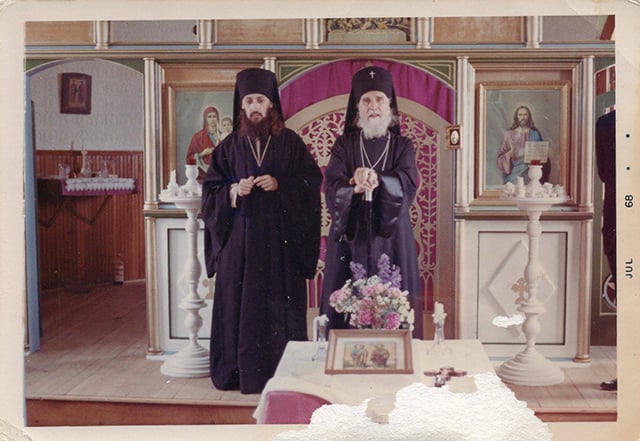
Fr. Hillary Madison and Archbishop John Garklavs
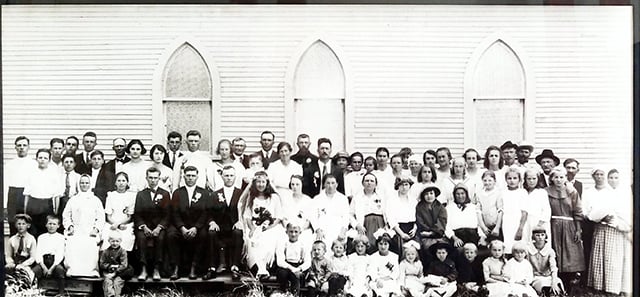
Pozniak–Lucachick wedding at St. Peter and St. Paul Church, 1922
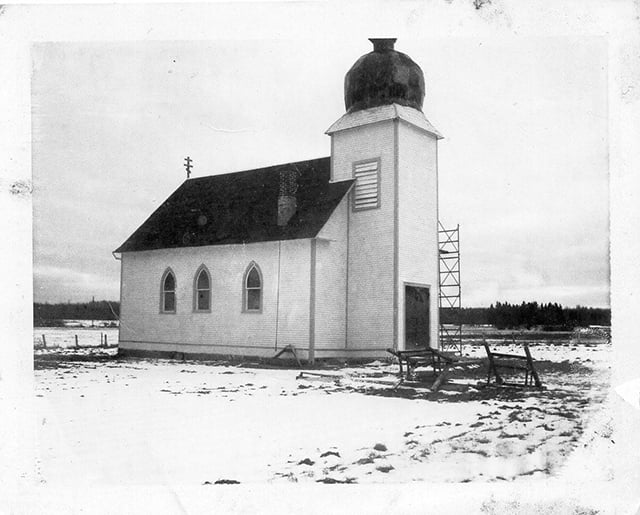
Painting St. Peter and St. Paul Russian Orthodox Church, 1967
Holding Location
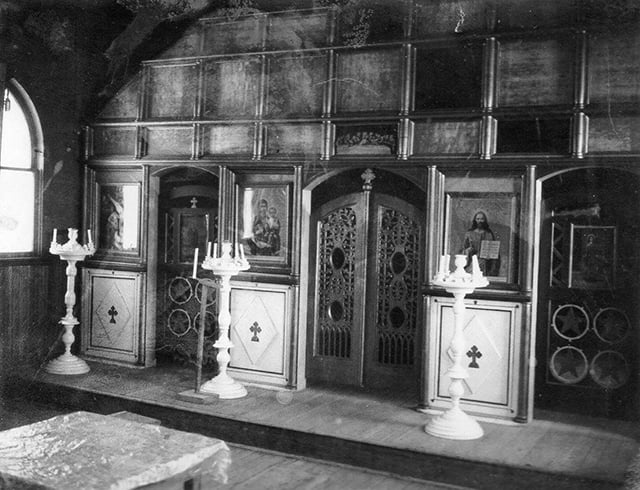
Iconostasis in St. Peter and St. Paul Russian Orthodox Church, 1967
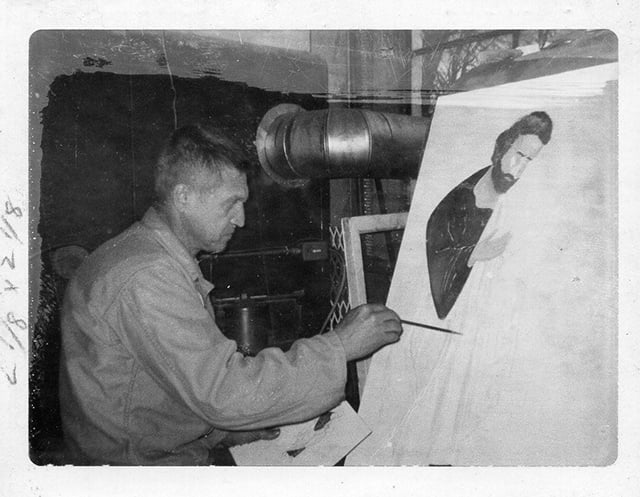
Chuck Jellinek
Holding Location
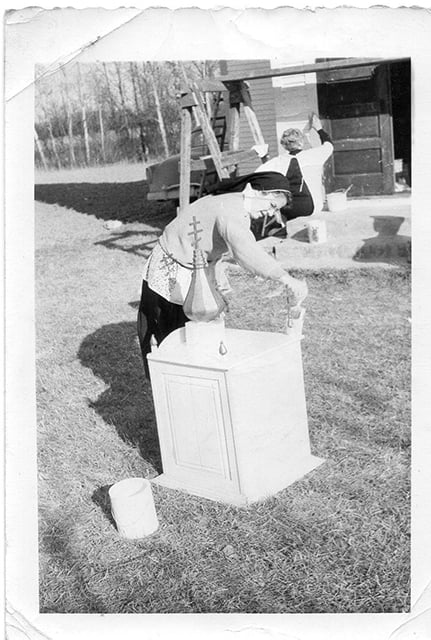
Sister Mary Charles McGough
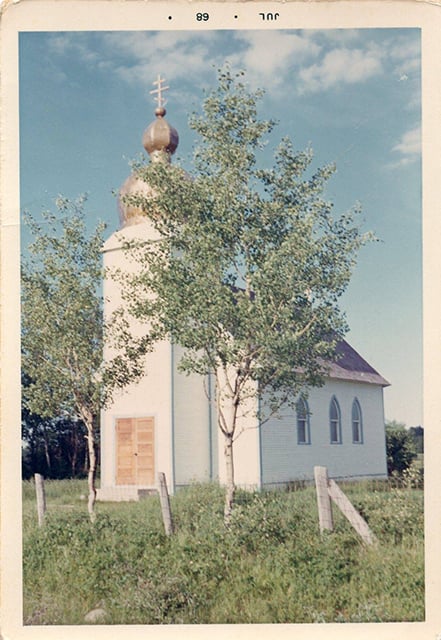
Exterior of St. Peter and St. Paul Russian Orthodox Church, 1968
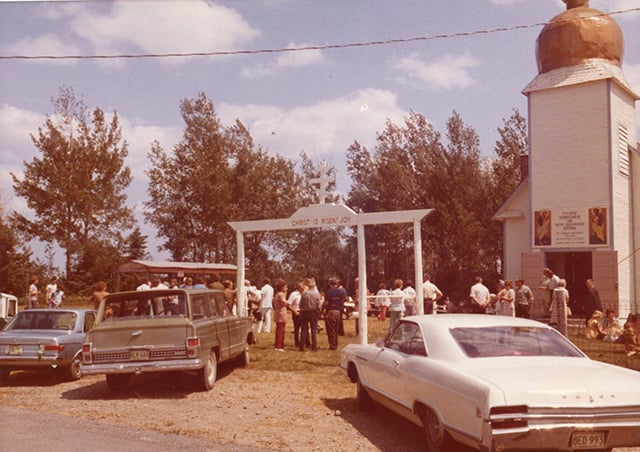
Front gate during Fiftieth Anniversary Celebration
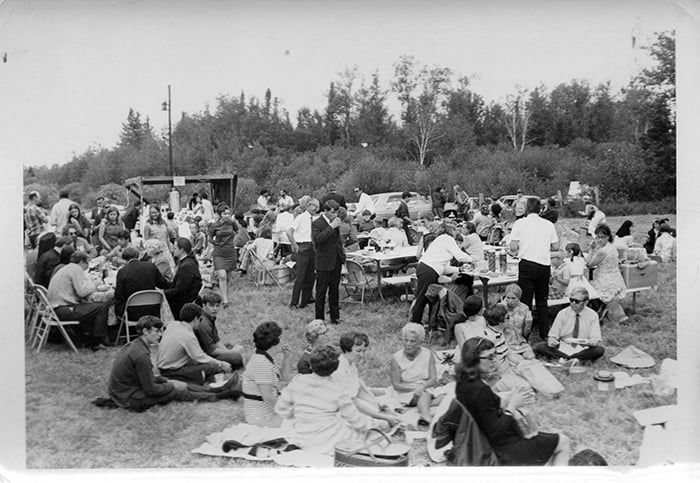
Fiftieth Anniversary Celebration, St. Peter and St. Paul Russian Orthodox Church
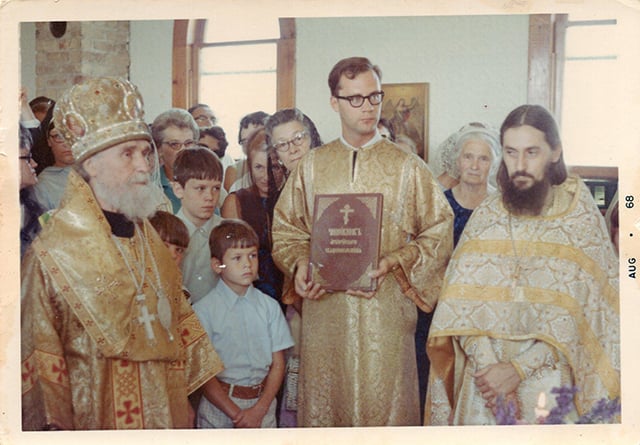
Clergy inside St. Peter and St. Paul Russian Orthodox Church
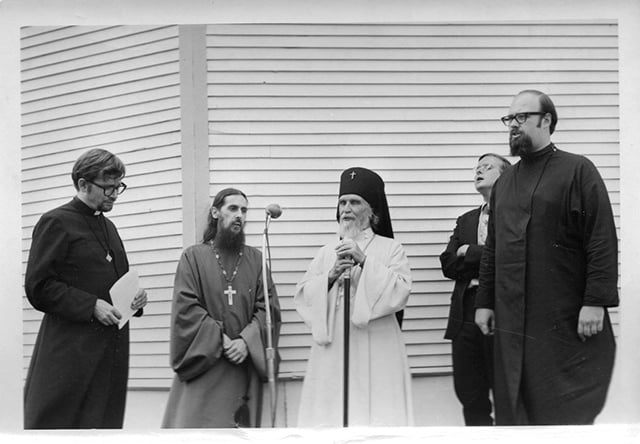
Fr. Paul Berg, Fr. Hillary Madison and Archbishop John Garklavs
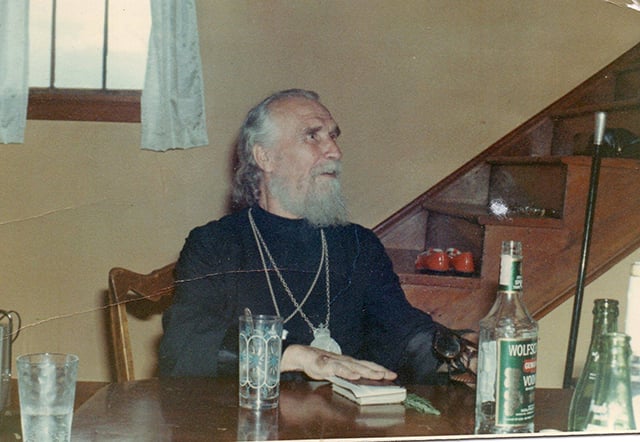
Archbishop John Garklavs
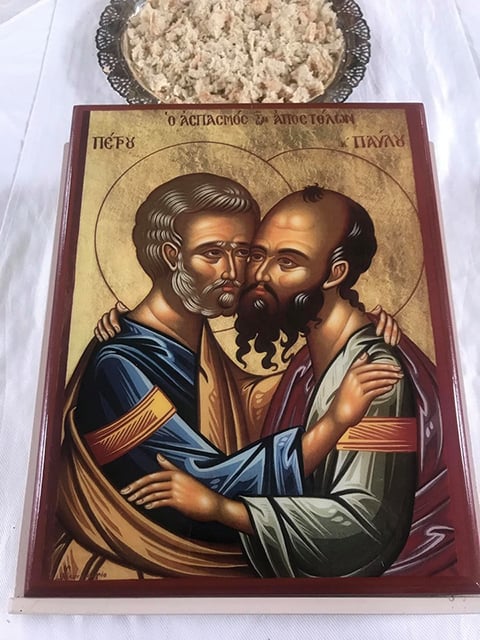
Art depicting St. Peter (left) and St. Paul (right)
Holding Location
Articles
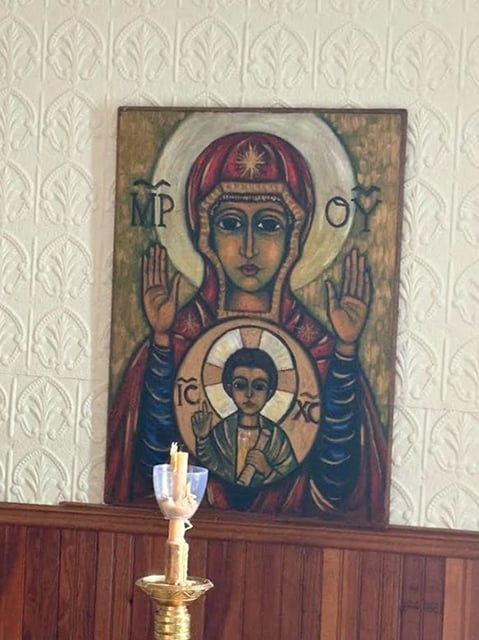
Our Lady of Unity
All rights reserved

Rear side of St. Peter and St. Paul Russian Orthodox Church
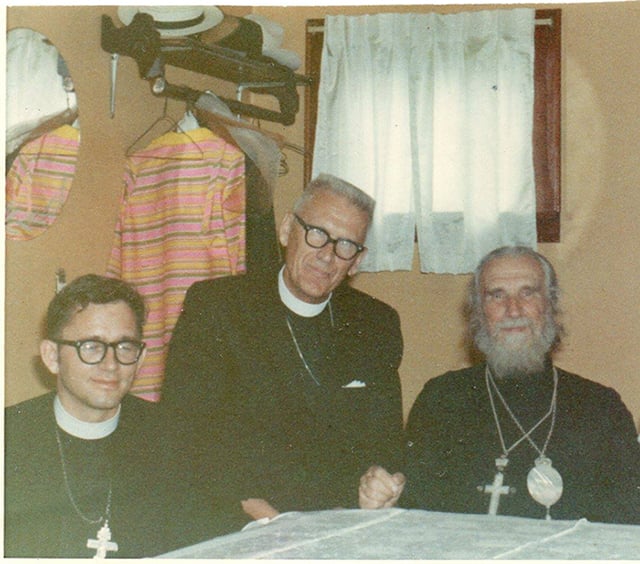
Fr. Paul Berg, Rev. E. M. Berg, and Archbishop John Garklavs
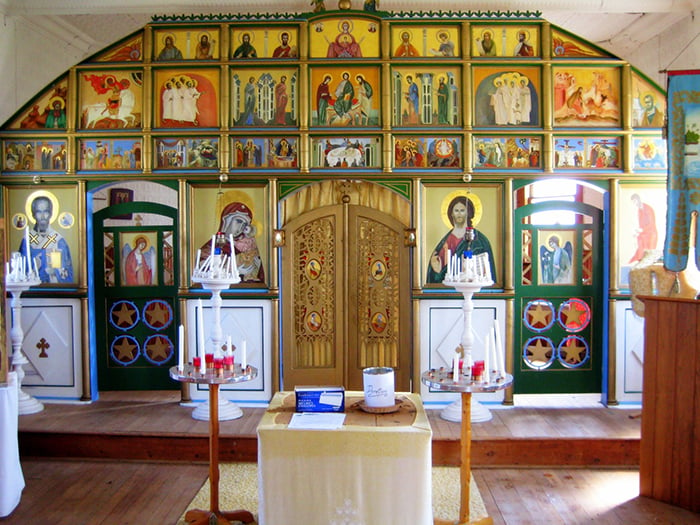
Iconostasis inside St. Peter and St. Paul Russian Orthodox Church

Side view of the exterior of St. Peter and St. Paul Russian Orthodox Church, 2016
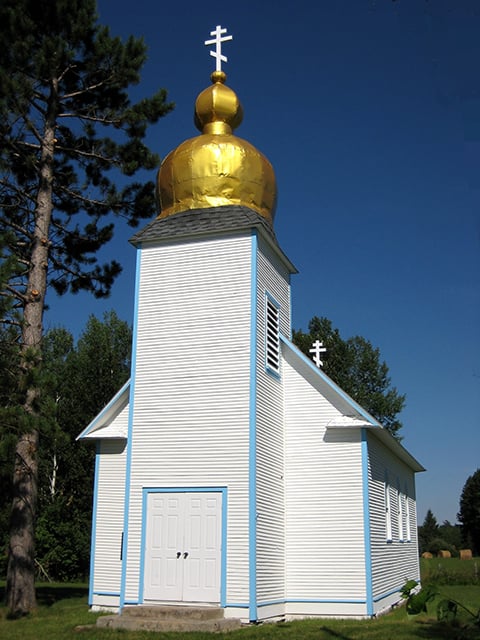
Front view of the exterior of St. Peter and St. Paul Russian Orthodox Church, 2016
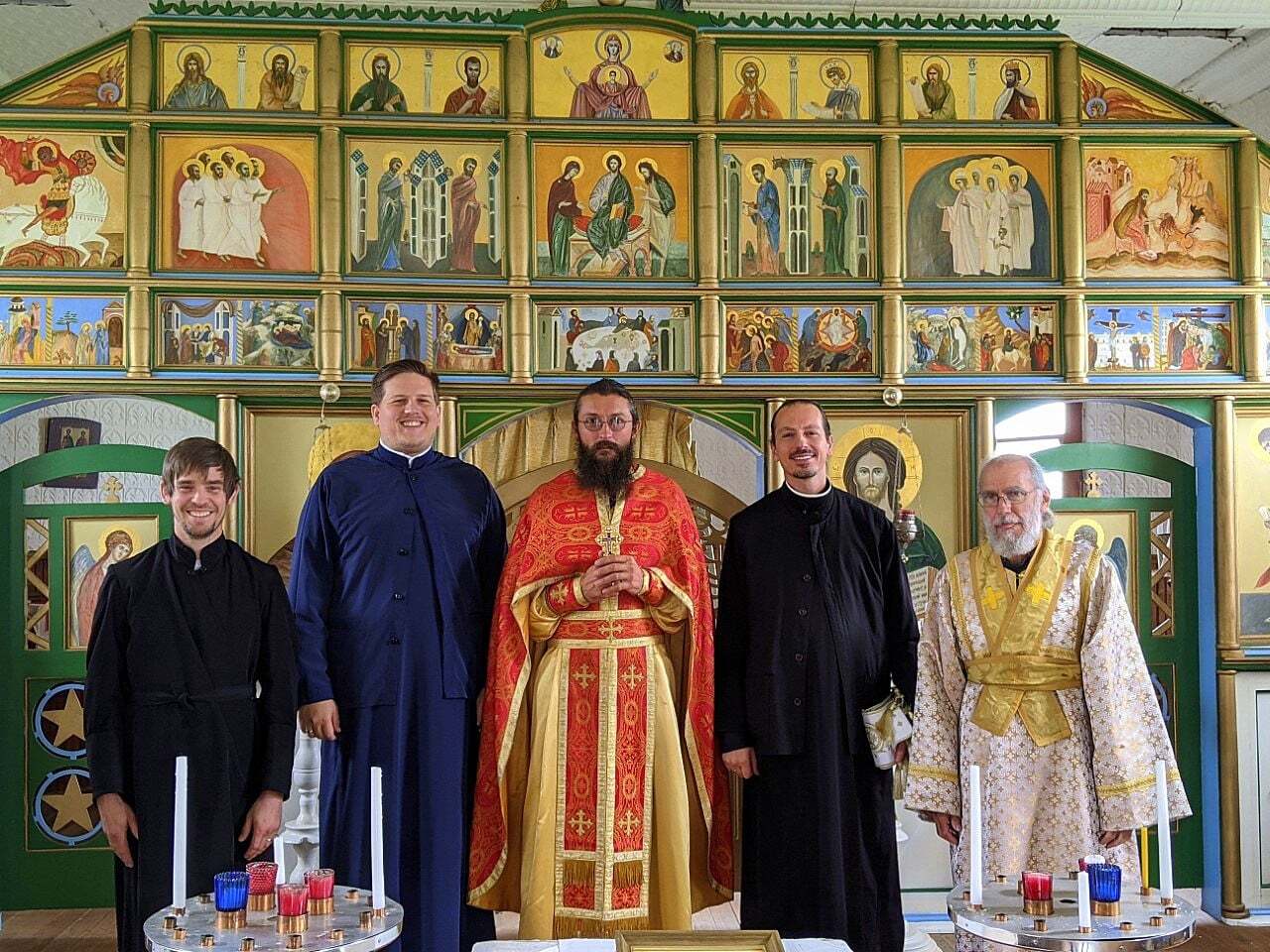
Reader Andrew, Fr. Milos, Fr. Dean Franck, Fr. Kristijan Petrovich, and Subdeacon Alexander

Fr. Dean Franck, Fr. Kristijan Petrovich, and Fr. Milos
Related Articles
Turning Point
Chronology
1905
1915
1918
1926
1932
1968
1970s
1982
1983
2010
2011
2018
Bibliography
Berg, Paul L. “The Incredible Story of the Forgotten Church.” Orthodox Church 4, no. 6 (June/July 1968): 6–7, 10–11.
Dyrud, Keith P. “East Slavs: Rusins, Ukrainians, Russians, and Belorussians.” In They Chose Minnesota: A Survey of the State’s Ethnic Groups, edited by June Drenning Holmquist, 405–422. Minnesota Historical Society Press, 1981.
Goman, John D. Galician-Rusins on the Iron Range. Rohart Services Desktop Publishing, 1990.
Knutson, David. “Little-used Orthodox Church a Jewel in the Wilderness.” St. Paul Pioneer Press, May 15, 1994.
Lathrop, Alan K. Churches of Minnesota: An Illustrated Guide. University of Minnesota Press, 2003.
“‘Lost Parish’ Receives New Convert.” Orthodox Church 41, nos. 8/9/10 (August/September/October 2005): 14.
Lucachick, James. “Sts. Peter and Paul Russian Orthodox Church.” National Register of Historic Places nomination form, December 29, 1982. State Historic Preservation Office, St. Paul.
Tyssen, Linda. “Historic Bramble Russian Orthodox Church to Celebrate Annual Service.”Mesabi Tribune, September 11, 2021.
Related Resources
Secondary
Duly, William. The Rusins of Minnesota. Rusin Association, 1993.
Herbel, Oliver. Turning to Tradition: Converts and the Making of an American Orthodox Church. Oxford University Press, 2014.
Sarkisian, Aram Gregory. “The Cross Between Hammer and Sickle: Russian Orthodox Christians in the United States, 1908–1928.” PhD diss., Northwestern University, 2019.
——— . “‘We Go Fearlessly into the Maw of Death’: The Influenza Epidemic of 1918 in American Orthodox Rus.’” Journal of Orthodox Christian Studies 4, no. 2 (2021): 211–37.
Web
2 Wheels 1 Compass. “An Abandoned Eastern Orthodox Church in Northern MN: 2W1C S04E04.” YouTube video, 6:32.
https://youtu.be/fn0RyP3Dr8c
Facebook. St. Peter & St. Paul Russian Orthodox Church. https://www.facebook.com/St.PeterSt.PaulMN
Orthodox Wiki. Ss. Peter and Paul Church (Bramble, Minnesota). https://orthodoxwiki.org/Ss._Peter_and_Paul_Church_(Bramble,_Minnesota)






















